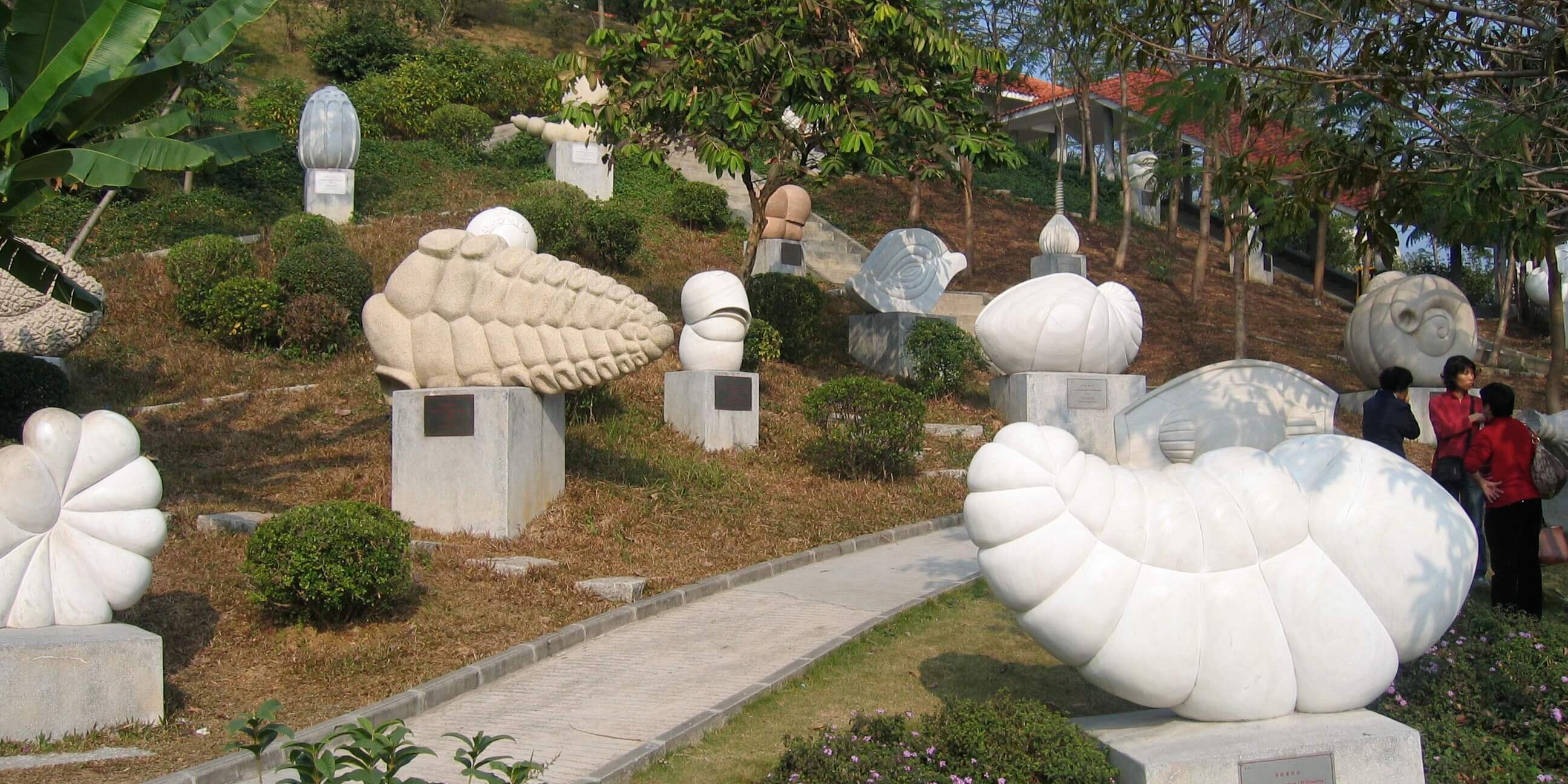
China has dedicated a park to 114 large sculptures of foraminifera! These marine unicellular microorganisms mostly secrete a calcium-carbonate test (shell) or construct a test by binding grains with a bioadhesive. They live in the upper water column and on the seafloor throughout most of the world’s oceans. Their assemblages and test chemistry are widely used by micropaleontologists, paleoceanographers, and paleoclimatologists to reconstruct past global climates, glacial ice volume, sea level, ocean circulation, ocean chemistry, geochronology, and evolution.
The germ of an idea for the sculpture park first began when marine geologist Bilal Haq of the National Science Foundation visited the lab of marine biologist and academician Zheng Shouyi at the Institute of Oceanology in Qingdao. A prolific taxonomist and one of the world’s leading foraminiferalogists, Zheng had meticulously produced palm-size models of over a hundred benthic and planktonic foraminifera for educational purposes. Haq was so struck by their aesthetic beauty and almost abstract quality that he proposed to Zheng that the models could be enlarged into sculptures, and that a public park populated by the sculptures would be a great outreach project. Zheng, a woman of action and a politically influential scientist, convinced authorities in her hometown of Zhongshan in Guangdong Province to do just that. Thus, 114 sculptures of Paleozoic to modern foraminiferal species were carved out of marble, granite, and sandstone by artisans over five years under the exacting eye of Zheng Shouyi.
The world’s first Foraminiferal Sculpture Park officially opened on December 5, 2009. Haq attended the inauguration and remarked that the Park is breathtaking. It covers several acres on a hillside and has a foraminiferal-like spiral-shaped museum dedicated to the history and applications of foraminifera in academic and industrial research. It is a smash hit with locals, especially with school children. City elders are equally fond of the project and they hope it will attract international audiences to this unique display of science mixing with everyday life and culture of a town. Zheng hopes it will inspire younger generations to study science (especially bio- and geosciences). Haq feels that the beautifully located park should do just that!
[Modified after original contribution by Bilal Haq]
